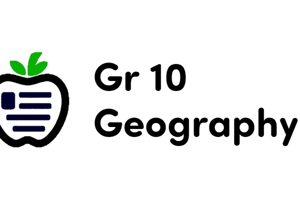Podcast
Questions and Answers
Geomorphology เป็นการศึกษาอะไร?
Geomorphology เป็นการศึกษาอะไร?
- การสืบสันประวัติของคน
- ประวัติศาสตร์ของโลก
- โครงสร้างของโลก
- รูปร่างของพื้นผิวของโลก (correct)
Seismic geomorphology ใช้ข้อมูลชนิดใดเพื่อศึกษาลักษณะของพื้นผิวที่ถูกฝังอยู่?
Seismic geomorphology ใช้ข้อมูลชนิดใดเพื่อศึกษาลักษณะของพื้นผิวที่ถูกฝังอยู่?
- ข้อมูลภูมิสารสนเทคทักษิย
- ข้อมูลซีสมิก
- ข้อมูลเมทาโมโกรลอย
- ข้อมูลซีสมิค (correct)
Mineralogy เป็นการศึกษาเกี่ยวกับอะไร?
Mineralogy เป็นการศึกษาเกี่ยวกับอะไร?
- โครมาโทกราฟี
- จุลินทรีย์
- แร่วิทยา (correct)
- สถาปัตยกรรม
Seismology เป็นการศึกษาเกี่ยวกับอะไร?
Seismology เป็นการศึกษาเกี่ยวกับอะไร?
การผสมผสานการทำงานระหว่างซีสไมก์และภูมิรูปพื้นผิวช่วยเพิ่มคุณภาพข้อมูลได้อย่างไร?
การผสมผสานการทำงานระหว่างซีสไมก์และภูมิรูปพื้นผิวช่วยเพิ่มคุณภาพข้อมูลได้อย่างไร?
สาขาวิชาใดเป็นสำคัญต่อธรณีเนื่องจากเป็นตัวกำหนดของหินและช่วยให้สามารถตีความลักษณะของหินได้ดีขึ้น?
สาขาวิชาใดเป็นสำคัญต่อธรณีเนื่องจากเป็นตัวกำหนดของหินและช่วยให้สามารถตีความลักษณะของหินได้ดีขึ้น?
ทฤษฎีการทำงานของซีสไมก์ใช้อะไรเพื่อประเมินคุณสมบัติของใต้ผิวโลก?
ทฤษฎีการทำงานของซีสไมก์ใช้อะไรเพื่อประเมินคุณสมบัติของใต้ผิวโลก?
การศึกษาทิศทางการแผ่ของดินด้วยซีสไมออกแบบใด?
การศึกษาทิศทางการแผ่ของดินด้วยซีสไมออกแบบใด?
การทำศึกษาโครงสร้างภูมิใต้ดินเป็นส่วนหนึ่งของสาขาวิชาใด?
การทำศึกษาโครงสร้างภูมิใต้ดินเป็นส่วนหนึ่งของสาขาวิชาใด?
การผสมผสานของแผ่นการกระจายที่ถูกกระตุ้นโดยวินตกร โดยไถ่ใช้ sonic waves ช่วยในการ?
การผสมผสานของแผ่นการกระจายที่ถูกกระตุ้นโดยวินตกร โดยไถ่ใช้ sonic waves ช่วยในการ?
สมการทั่วไปของเส้นโคนเฉพาะประเภทใด?
สมการทั่วไปของเส้นโคนเฉพาะประเภทใด?
ถ้า $AC > 0$ และ $B^2 - 4AC < 0$ ตามสมการของเส้นโคน จะได้เส้นโคนประเภทใด?
ถ้า $AC > 0$ และ $B^2 - 4AC < 0$ ตามสมการของเส้นโคน จะได้เส้นโคนประเภทใด?
ทำไมถึงบอกว่า Power of Conic Sections ไม่ต้องใช้การค้นหาเพื่อปลดล็อค?
ทำไมถึงบอกว่า Power of Conic Sections ไม่ต้องใช้การค้นหาเพื่อปลดล็อค?
ตามสมการ $Ax^2 + Bxy + Cy^2 + Dx + Ey + F = 0$, เงื่อนไข $AC > 0$ และ $B^2 - 4AC < 0$ และ $D^2 + E^2 > 0$ จะได้เส้นโคนประเภทใด?
ตามสมการ $Ax^2 + Bxy + Cy^2 + Dx + Ey + F = 0$, เงื่อนไข $AC > 0$ และ $B^2 - 4AC < 0$ และ $D^2 + E^2 > 0$ จะได้เส้นโคนประเภทใด?
สมการทั่วไปของพาราโบลาในตำแหน่งมาตรฐานคืออะไร?
สมการทั่วไปของพาราโบลาในตำแหน่งมาตรฐานคืออะไร?
เมื่อเปรียบเทียบกับประวัติศาสตร์ ผู้ใดเคยสร้างการแสดงสมมติฐานเกี่ยวกับหลักการเชิงเส้นของพาราโบลาในศตวรรษที่ 3 ก่อนปีคริสต์?
เมื่อเปรียบเทียบกับประวัติศาสตร์ ผู้ใดเคยสร้างการแสดงสมมติฐานเกี่ยวกับหลักการเชิงเส้นของพาราโบลาในศตวรรษที่ 3 ก่อนปีคริสต์?
สมการทั่วไปของวงกลมคืออะไร?
สมการทั่วไปของวงกลมคืออะไร?
ใครเป็นผู้ที่ทำงานเกี่ยวกับการเคลื่อนที่ของดาวเคราะห์และค้นพบกฎแรงดึงดูดของโลกจากการศึกษาเกี่ยวกับวงเวียนของดาวเคราะห์?
ใครเป็นผู้ที่ทำงานเกี่ยวกับการเคลื่อนที่ของดาวเคราะห์และค้นพบกฎแรงดึงดูดของโลกจากการศึกษาเกี่ยวกับวงเวียนของดาวเคราะห์?
Flashcards are hidden until you start studying
Study Notes
Geology's Key Subdisciplines: Geomorphology, Mineralogy, and Seismology
Geology, the study of our planet's history, structure, and composition, encompasses a wealth of fascinating and interconnected subjects. In this exploration, we'll delve into three pivotal subdisciplines: geomorphology, mineralogy, and seismology.
Geomorphology
Geomorphology is the study of Earth's landforms, their processes, and their evolution over time. It encompasses both surface geology, which focuses on landforms exposed at the surface, and seismic geomorphology, which examines buried landforms using seismic data. Seismic geomorphology, a relatively young science, has emerged since the 1970s, using 2D and 3D seismic data to reveal details about geological history and buried landforms.
Seismic geomorphology techniques are especially important for industries like oil and gas exploration, where they help identify reservoir rocks with high precision and accuracy. By combining seismic geomorphology, sedimentology, and sequence stratigraphy, geologists can reconstruct the depositional geomorphology of fluvial channels, submarine fans, and carbonate reefs, thereby estimating the distribution of reservoir rocks.
Surface geomorphology techniques, utilizing emerging space and proxy-remote sensing technologies, enable regional and continental studies of geomorphological features. The integration of seismic and surface geomorphology workflows enhances data quality and improves geological mapping and land and marine feature modeling.
Mineralogy
Mineralogy, the study of minerals and their properties, is fundamental to geology. Minerals are the building blocks of rocks and provide valuable insights into the Earth's composition and evolution. By understanding minerals, geologists can better interpret rock formations and identify the conditions under which they formed.
Mineralogy also plays a crucial role in fields like mineral resources exploration, environmental geology, and earth materials science. The study of minerals helps scientists to identify potential sources of valuable resources such as metal ores, precious stones, and industrial minerals.
Seismology
Seismology is the study of Earth's internal structure, composition, and dynamics, using the vibrations generated by earthquakes and other sources of seismic waves. Reflection seismology, a branch of seismology, uses sonic waves to assess the properties of the Earth's subsurface. This technique, in combination with seismic geomorphology, is essential for mapping and understanding the distribution of geological structures and resources.
Seismology also encompasses earthquake hazard assessment, a critical component of seismic geomorphology. The study of landscapes affected by tectonics, referred to as "tectonic geomorphology," provides important clues about seismic hazards.
The integration of seismology, geomorphology, and mineralogy provides a comprehensive understanding of the Earth's complex history and processes. This interdisciplinary approach helps scientists to better interpret the Earth's past and present, and to make informed decisions about its future.
Studying That Suits You
Use AI to generate personalized quizzes and flashcards to suit your learning preferences.




